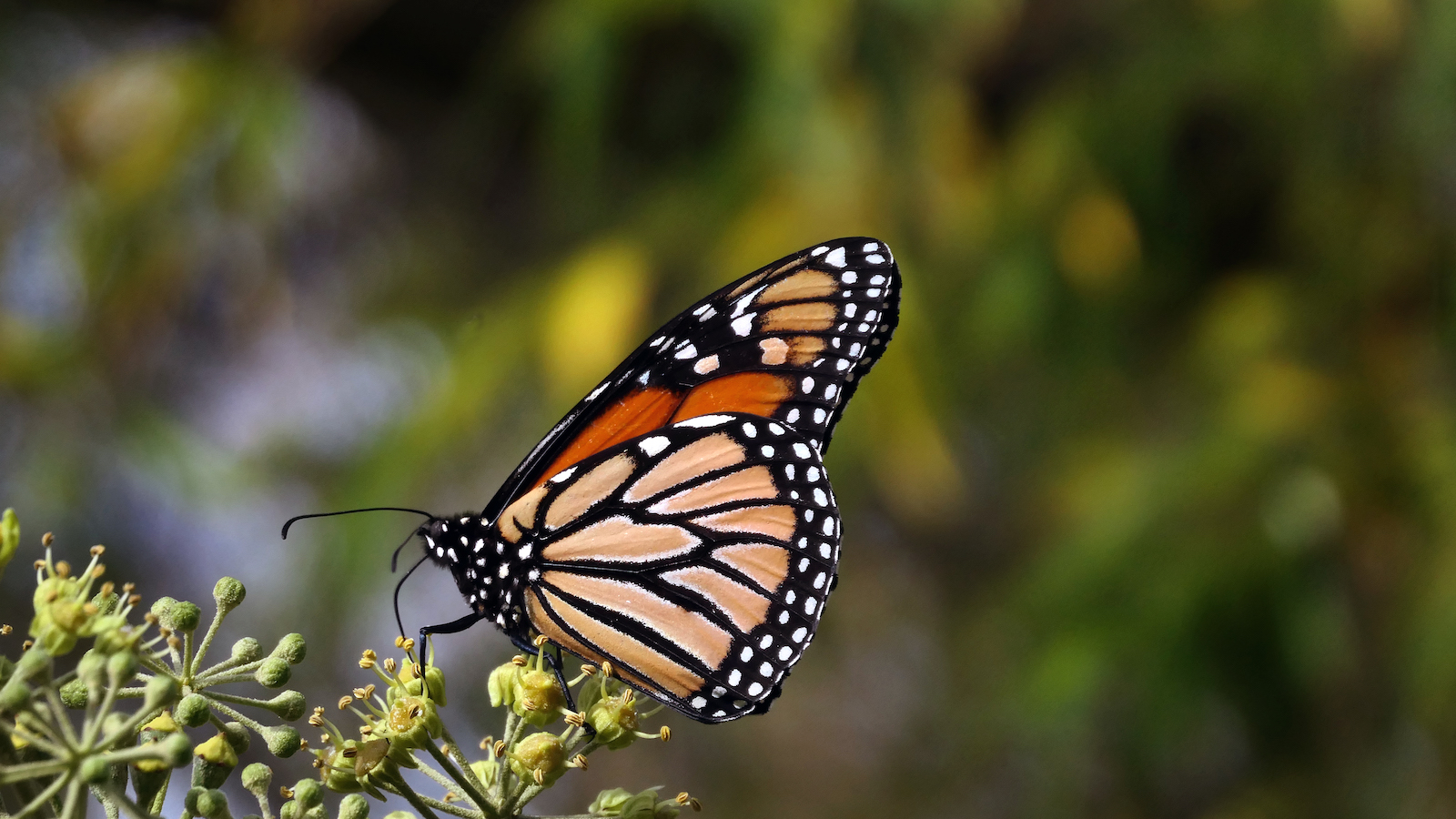
Tell your governor: Support monarchs and plant milkweed on public lands
Fewer monarch butterflies will reach their home this winter. We have to act now to restore monarch habitat and help ensure their continued survival.
Updated
TAKE ACTION
In the 1990s, researchers tallied 700 million monarch butterflies that successfully completed the long and fraught trek south to their overwintering sites. Trees blossomed with the fluttering of black and orange dotted wings, and the butterflies could breed easily, ensuring a new generation. It was a good year for the monarchs.
In 2022, researchers counted just 335,000 butterflies. And in July 2022, the International Union for Conservation of Nature officially listed North America’s monarch butterfly as endangered.
Threats to monarch butterflies are numerous and varied, from pesticide use to climate change to habitat loss. Monarchs are particularly vulnerable while living at their overwintering sites, which they are preparing to travel to now.
The good news is, there are opportunities all around us — public lands, parks, roadsides, our own backyards — to create pollinator habitats that will allow monarchs to recover and eventually thrive. But we have to act now if we are going to protect monarch butterflies long term.
Generations of school children have been able to witness the miraculous metamorphosis of caterpillars to vibrant monarchs. We want to ensure the generations that will come after us can have the same experience.
Monarchs are more to us than just an insect. For some, they represent the souls of people who have passed on. For others, they are a bright, exciting visitor to their home gardens. And for the whole world, monarchs are pollinators to wildflowers and essential foods we enjoy.
Because of the monarch butterfly’s high perch in our imaginations, the plight of the monarch helps to rally Americans to save all pollinators. If we lose the monarch, does the overall effort lose steam?
This is not the future we want, and there’s still time to avoid it. But we need to convince our decision makers to act. Creating more pollinator habitat will be key to giving monarchs a chance at long-term survival, which is why we are urging governors to plant milkweed on public lands.
Monarchs exclusively lay their eggs on milkweed plants, but pesticide use over the last decade has made milkweed very hard for monarchs to find.
We can make it easier. By planting milkweed across the country, monarchs will be able to shelter and reproduce, and caterpillars will have plenty to eat. This will be especially important when monarchs set off on their spring migration in search of milkweed to lay their eggs on.
Milkweed we plant now could help save monarchs as early as next March. By next winter, we could see monarch populations rebound.
Making this happen will require leadership. We are calling on governors to plant native milkweed and other pollinator habitat on state lands, and give monarchs better odds for long-term survival.
It’s simple: no milkweed, no monarchs. Our campaign recognizes this fundamental fact, which is why Environment America and our national network is calling on governors to plant native milkweed, and other plants the monarchs need to survive.
Imagine if roadsides, state parks, the grounds of government buildings, public lawns and even state-owned rooftops were flush with the flowers and milkweed that monarchs need to survive their long journey and to reproduce in the spring.
We need all hands on deck if we are going to convince lawmakers to take action. Sign our petition. Share it with family and friends. Help fund our campaigns that advocate for other solutions, like reducing pesticide use, and passing stronger federal protections for monarch’s. This could be our chance to turn things around.
And we have power in our own backyards too. Monarchs will search for milkweed and other pollinator-friendly flowers in your garden. Planting native milkweed at home could provide vital rest, food and shelter to a monarch that is traveling more than 50 miles every day for up to 2 months.
We want to see monarchs take to the skies for their epic migrations for years to come. We want nature to flourish, and protecting monarchs is a key step toward that vision.
Future generations will be proud of all we did to help save the monarchs and will enjoy tending to gardens bursting with pollinator-friendly plants. But we have to put in the work now.
This win is within reach. Take action for monarchs today.
Join us in calling on your governor to plant native milkweed species on public land.
TAKE ACTION
Steve directs Environment America’s efforts to protect our public lands and waters and the species that depend on them. He led our successful campaign to win full and permanent funding for our nation’s best conservation and recreation program, the Land and Water Conservation Fund. He previously oversaw U.S. PIRG’s public health campaigns. Steve lives in Sacramento, California, with his family, where he enjoys biking and exploring Northern California.
